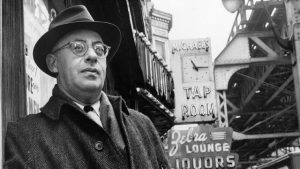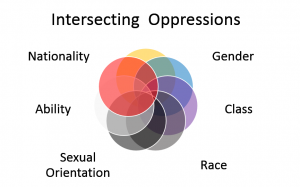What defines a successful relationship between a community and its organizers?
Let’s look at:
- civil rights activist Ella Baker, an underrepresented member of an already-marginalized community who organized with that community. A significant yet overlooked figure in the NAACP, the Southern Christian Leadership Conference, & the Student Nonviolent Coordinating Committee

http://time.com/4633460/mlk-day-ella-baker/
(Click here to learn more about Ella Baker)
- labor activist Saul Alinsky, “an outsider who agitates” (Martinson & Su, 2012, p. 60). Famous for organizing protests that garnered mass media attention & his 1971 book on organizing, Rules for Radicals, which drew on his decades of experience working with unions

https://en.wikipedia.org/wiki/Rules_for_Radicals
Alinsky lay a successful groundwork for pragmatic organizing. As an outsider, he focused on:
- Starting nationally & moving to the local level
- Building a “mass power base” (Alinsky, 1971, p.64)
However, the Alinskyite model has some issues:
- Alinsky sees an organizer as a performer. His model requires a disconnect from the community that allows for emotionless analysis.
- Since the Alinsky model uses leaders who come from outside the community, there are bound to be discrepancies between what the community wants and what the organizer thinks is right.
- to solve this problem, an organizer has to be a “political relativist” and reject “dogma” (p. 1).
- a leader must maintain a degree of separation from the community in order to steer clear of polarized beliefs (p. 1), which in his opinion lead to muddied thinking.
- At the same time, however, a leader must successfully agitate the community and avoid alienating its members. To do so, the leader must appear aligned with the group in ways that, in reality, they are not.

https://www.wsm.ie/c/intersectionality-basic-primer
- Since the Alinsky model uses leaders who come from outside the community, there are bound to be discrepancies between what the community wants and what the organizer thinks is right.
- An organizer’s outsider position often renders them unable to fully understand and evaluate the issues that community members, with many intersecting layers of oppression, may face.
- White Alinskyite organizers have gone into communities of color, bringing with them “rules and tactics of organizing that [have] not always fit the values and experiences” of these communities (Martinson and Su, 2012, p. 60).
- Alinsky’s model has been responsible for the further marginalization of women–especially within communities of color–for reasons such as its inability to take into account a “work/life balance for organizer” (p. 64), ignoring the extra burdens women (of color) are often expected to take on in their communities.

https://pinklarkin.com/intersectionality-work-law/
- Alinsky might be too pragmatic
- Alinsky focuses on how to pick a “good issue” to rally around
- “simple, specific, and winnable” (Alinsky, 1971, p. 61)
- in other words, something easily marketable. He considers:
- how his organizations’ constituencies and the general public will react to such issues
- how he can “agitate” and “mobilize” the masses around them (p. 60).
- This isn’t always a bad thing, but…
- Targeting these “good issues” doesn’t necessarily tackle the structural problems marginalized communities face
- A “good issue” may not be what the community wants (or needs) to rally around
- Alinsky’s view of education in organization is to make the community follow what the organizer, an outsider, deems is the right choice.
- Alinsky focuses on how to pick a “good issue” to rally around
Baker’s model can improve upon the positive aspects of the Alinsky model:
- Baker organized in the community she came from.
- She believed that “Strong people don’t need strong leaders” (Mueller, 2004, p.1).
- Baker did not feel the need to “educate” (force methods on) her community in the way Alinsky did
- While Alinsky’s model requires organizers to have expertise, if not technical training (Alinsky, 1971), Baker believed in the value of the ideas that groups like young people–in other words, unprofessional activists–could bring to organizing.
- By minimizing hierarchy, Baker prevented a top-down “education” consisting of an organizer forcing ideas onto a community (Mueller, 2004).
Successful organizing draw from both models:

Works Cited
Alinsky, S. (1971). Rules for radicals. New York: Vintage Books.
Martinson, M. and Su, C. (2012). Contrasting Organizing Approaches: The “Alinsky Tradition” and Freirian Organizing Approaches. In: M. Minkler, ed., Community Organizing and Community Building for Health and Welfare, 1st ed. New Brunswick: Rutgers University Press, pp.58-77.
Mueller, C. (2004). Ella Baker and the Origins of “Participatory Democracy.” Taylor and Frances.
